In order to make the metal workpiece has the required working performance, heat treatment process is often essential. Heat treatment process generally includes heating, holding, cooling three processes, due to the different processes are divided into quenching, tempering, normalizing, annealing, etc., do you distinguish?
Quenching of steel is the steel heated to the critical temperature Ac3 (sub-eutectic steel) or Ac1 (over-eutectic steel) above the temperature, insulation for a period of time, so that all or part of the austenitization, and then faster than the critical cooling rate of the cooling rate of fast cold to Ms below (or Ms near the isothermal) for martensite (or bainite) transformation of the heat treatment process. Usually also aluminum alloys, copper alloys, titanium alloys, tempered glass and other materials solution treatment or heat treatment process with rapid cooling process called quenching.
(1) to improve the mechanical properties of the metal into material or parts. For example: to improve the hardness and wear resistance of tools, bearings, etc., to improve the elastic limit of the spring, to improve the overall mechanical properties of shaft parts.
(2) improve the material properties or chemical properties of some special steel. Such as improving the corrosion resistance of stainless steel, increase the permanent magnetism of magnetic steel.
Quenching and cooling, in addition to the need for a reasonable choice of quenching medium, but also the correct quenching method, commonly used quenching methods, mainly single-liquid quenching, double-liquid quenching, graded quenching, isothermal quenching, localized quenching and so on.
① obtained martensite, bainite, residual austenite and other unbalanced (i.e., unstable) organization.
② the existence of large internal stress.
③ mechanical properties can not meet the requirements. Therefore, steel workpiece quenching generally have to go through the tempering
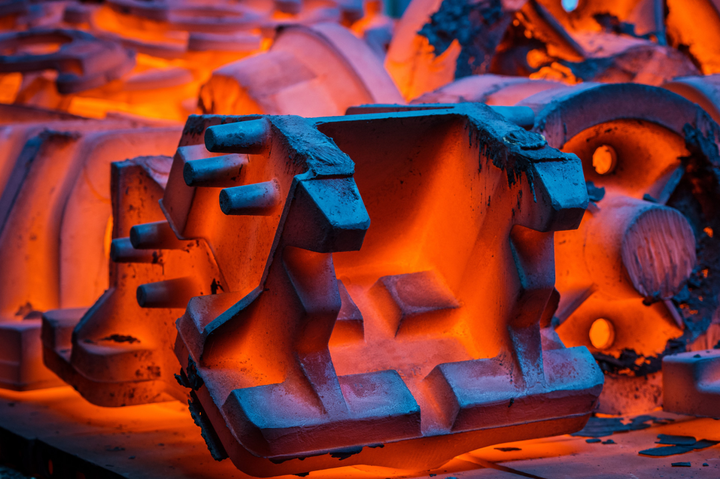
Tempering is the quenched metal material or parts heated to a certain temperature, insulation for a certain period of time, in a certain way to cool the heat treatment process, tempering is quenched immediately after an operation, usually is also the last process of heat treatment of the workpiece, and thus the quenching and tempering of the joint process known as the final treatment.
(1) reduce internal stress and reduce brittleness, quenched parts exist a lot of stress and brittleness, such as no timely tempering often produce deformation or even cracking.
(2) adjust the mechanical properties of the workpiece, workpiece quenching, high hardness, brittleness, in order to meet the different performance requirements of a variety of workpieces can be adjusted by tempering, hardness, strength, plasticity and toughness.
(3) Stabilize the size of the workpiece. By tempering can make the metallurgical organization tends to stabilize, in order to ensure that no further deformation in the future use of the process.
(4) Improve the cutting performance of certain alloy steels.
(1) improve the stability of the organization, so that the workpiece in the use of the process no longer occurs in the organization of the transformation, so that the geometry and performance of the workpiece to maintain stability.
② eliminate internal stresses in order to improve the performance of the workpiece and stabilize the workpiece geometry.
③ adjust the mechanical properties of steel to meet the requirements of use.
Tempering has these effects, because when the temperature rises, the atomic activity ability to enhance the steel of iron, carbon and other alloying elements of the atoms can be faster diffusion, atomic rearrangement and combination, so that the unstable imbalance of the organization is gradually transformed into a stable equilibrium organization. The elimination of internal stress is also related to the reduction of metal strength at elevated temperatures. Generally when steel is tempered, hardness and strength decrease and plasticity increases. The higher the tempering temperature, the greater the change in these mechanical properties. Some alloy steel with high alloy element content, when tempered at a certain temperature range, will precipitate some fine-grained metal compounds, so that the strength and hardness rise. This phenomenon is called secondary hardening.
Tempering requirements: workpieces for different purposes should be tempered at different temperatures to meet the requirements in use.
① Cutting tools, bearings, carburized quenched parts, surface quenched parts are usually tempered at a low temperature below 250℃. Low-temperature tempering after the hardness change is not significant, the internal stress is reduced, the toughness is slightly improved.
② springs tempered at 350 to 500 ℃ at medium temperature, can obtain high elasticity and necessary toughness.
③ medium-carbon structural steel made parts are usually tempered at 500 ~ 600 ℃ for high temperature, in order to obtain the appropriate strength and toughness of a good match.
Steel tempered at about 300 ℃, often making it more brittle, this phenomenon is called the first type of tempering brittleness. Generally should not be tempered in this temperature range. Certain medium carbon alloy structural steel tempered at high temperatures, if slowly cooled to room temperature, but also easy to become brittle. This phenomenon is known as Type II temper embrittlement. The addition of molybdenum to the steel, or cooling in oil or water during tempering, can prevent Type II temper embrittlement. The second type of temper brittleness of steel reheating to the original tempering temperature, you can eliminate this brittleness.
In production, often according to the requirements of the workpiece properties. According to the different heating temperatures, the tempering is divided into low-temperature tempering, medium-temperature tempering, and high-temperature tempering. Quenching and subsequent high-temperature tempering combined heat treatment process known as tempering, that is, in a high degree of strength at the same time, but also good plastic toughness.
(1) low-temperature tempering: 150-250 ℃ , M back, reduce internal stress and brittleness, improve the plastic toughness, high hardness and wear resistance. Used in the production of gauges, cutting tools and rolling bearings.
(2) medium temperature tempering: 350-500 ℃, T back, with high elasticity, a certain degree of plasticity and hardness. Used for making springs, forging molds, etc.
(3) high temperature tempering: 500-650 ℃, S back, with good overall mechanical properties. Used for making gears, crankshafts, etc.
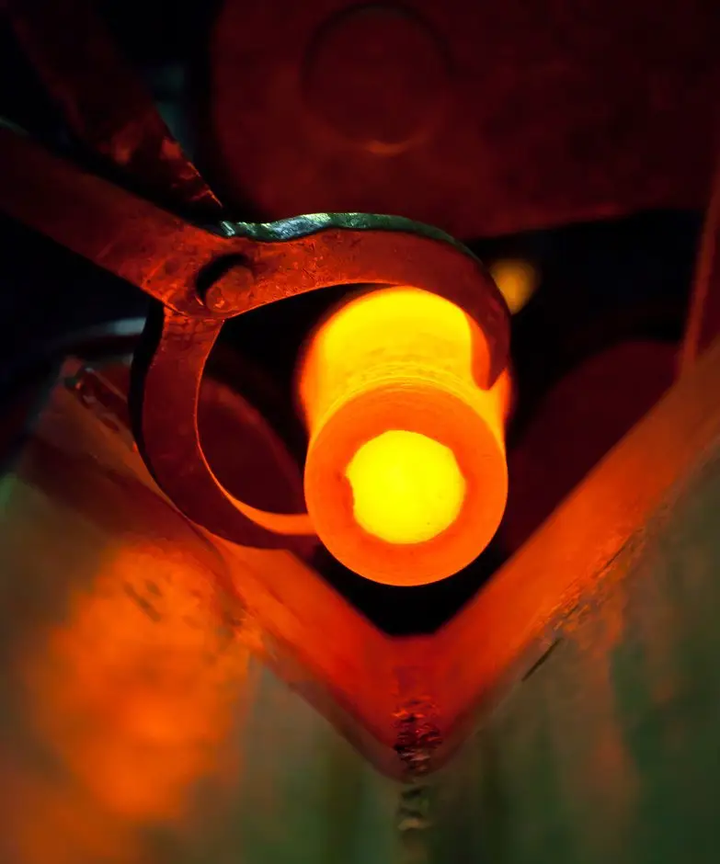
Normalizing is a heat treatment to improve the toughness of steel. The steel components will be heated to the Ac3 temperature above 30 ~ 50 ℃, hold a period of time out of the air-cooled. The main feature is that the cooling rate is faster than annealing and lower than quenching, normalizing can be slightly faster cooling in the crystalline grain refinement of steel, not only to get satisfactory strength, but also can significantly improve the toughness (AKV value), to reduce the tendency to cracking components. Some low alloy hot rolled steel plate, low alloy steel forgings and castings by normalizing treatment, the comprehensive mechanical properties of the material can be greatly improved, but also improved cutting performance.
① on the sub-eutectic steel, normalizing to eliminate casting, forging, welding parts of the overheating coarse crystalline organization and Wei's organization, rolled material in the banded organization; refinement of grain; and can be used as a quenching before the pre-heat treatment.
② eutectic steel, normalizing can eliminate the network of secondary carburization, and make the pearlite refinement, not only to improve the mechanical properties, but also conducive to the subsequent spherical annealing.
③ low carbon deep-drawn thin steel plate, normalizing can eliminate free carburization of grain boundaries to improve its deep-drawn properties.
④ low carbon steel and low carbon low alloy steel, the use of normalizing, you can get more fine flake pearlitic organization, so that the hardness increased to HB140-190, to avoid cutting the "sticky knife" phenomenon, improve the cutting processability. For medium carbon steel, in both available normalizing and annealing occasions, with normalizing is more economical and convenient.
⑤ for ordinary medium-carbon structural steel, in the mechanical properties required for the occasion is not high, can be used instead of quenching quenching and high-temperature tempering, not only easy to operate, but also to make the organization of steel and dimensional stability.
⑥ High-temperature normalizing (Ac3 above 150 ~ 200 ℃) due to the high temperature diffusion rate is higher, can reduce the composition of castings and forgings segregation. High-temperature normalizing after the coarse grains can be refined through the subsequent second lower temperature normalizing.
⑦ for some of the turbine and boiler for low and medium carbon alloy steel, often using normalizing to obtain the bainite organization, and then by high-temperature tempering, for 400 ~ 550 ℃ with good creep resistance.
⑧ In addition to steel parts and steel, normalizing is also widely used in ductile iron heat treatment, so that it obtains pearlite matrix, improve the strength of ductile iron.
Because of the characteristics of normalizing air cooling, and therefore the ambient air temperature, stacking mode, airflow and workpiece size on the organization and properties after normalizing have an impact. Normalized organization can also be used as a classification method for alloy steel. Usually according to the diameter of 25 mm specimen heated to 900 ℃, air-cooled organization, the alloy steel is divided into pearlite steel, bainitic steel, martensitic steel and austenitic steel.
Annealing is a metal heat treatment process in which the metal is slowly heated to a certain temperature, kept at a certain temperature for a sufficient period of time, and then cooled at a suitable rate. Annealing heat treatment is divided into complete annealing, incomplete annealing and stress relief annealing. The mechanical properties of annealed materials can be detected by tensile tests and also by hardness tests. Many steel materials are supplied in annealed heat-treated condition, steel hardness testing can be used Rockwell hardness tester, test HRB hardness, for thinner steel plates, steel strips, and thin-walled steel tubes, you can use the surface Rockwell hardness tester, test HRT hardness.
① improve or eliminate the steel in the casting, forging, rolling and welding process caused by a variety of organizational defects, as well as residual stress, to prevent the workpiece deformation, cracking.
② soften the workpiece for cutting.
③ refine the grain, improve the organization to improve the mechanical properties of the workpiece.
④ for the final heat treatment (quenching, tempering) to prepare the organization.
① complete annealing. Used to refine the medium and low carbon steel by casting, forging and welding after the mechanical properties of poor coarse superheated organization. The workpiece will be heated to ferrite all transformed into austenite temperature above 30 ~ 50 ℃, hold for a period of time, and then slowly cooled with the furnace, the austenite in the cooling process again, you can make the organization of the steel fine.
② spheroidal annealing. Used to reduce the high hardness of tool steel and bearing steel after forging. The workpiece will be heated to the steel began to form austenite temperature above 20 ~ 40 ℃, insulation and slow cooling, in the cooling process of pearlite in the lamellar carburite into spherical, thus reducing the hardness.
③ Isothermal annealing. Used to reduce the high hardness of certain alloy structural steel with high nickel and chromium content for cutting. Generally first cooled to the austenite at a faster rate to the most unstable temperature, insulation for an appropriate period of time, the austenite transformation to tosite or sostenite, the hardness can be reduced.
④ recrystallization annealing. Used to eliminate metal wire, sheet in the cold drawing, cold rolling process of hardening phenomenon (hardness increases, plasticity decreases). The heating temperature is generally 50-150 ℃ below the temperature at which the steel starts to form austenite, and this is the only way to eliminate the work-hardening effect so that the metal can be softened.
⑤ Graphitization annealing. ⑤ Graphitization annealing. This is used to transform cast iron containing a large amount of carburization into malleable cast iron with good plasticity. Process operation is the casting is heated to about 950 ℃, insulation for a certain period of time after appropriate cooling, so that the decomposition of carburite to form a flocculent graphite.
⑥ diffusion annealing. Used to make the chemical composition of alloy castings uniform, improve its performance. Method is not melting under the premise that the casting is heated to the highest possible temperature, and a long period of heat preservation, to be a variety of elements in the alloy diffusion tends to be uniformly distributed after slow cooling.
(7) stress relief annealing. Used to eliminate the internal stress of steel castings and weldments. For iron and steel products begin to form austenite after heating the temperature below 100 to 200 ℃, insulation and cooling in the air, you can eliminate internal stress.
Quenching, tempering, normalizing, annealing and other heat treatment processes have an important role in the processing of metal materials. They can not only improve the mechanical properties of the metal, improve the hardness, strength, toughness, etc., but also eliminate internal stress, adjust the organization to meet the requirements of different workpieces. Each heat treatment process has its own unique purpose and application areas, the correct selection and mastery of these processes is essential for the production of high quality metal products.
Correct understanding and application of heat treatment processes such as quenching, tempering, normalizing, annealing, etc., will help to improve the performance of workpieces, prolong their service life, and ensure success in engineering and manufacturing fields. It is therefore vital that the appropriate heat treatment method is selected on a case-by-case basis to ensure that the end product meets the required performance and quality standards in actual production.
Richconn was established in 2008, as a precision machine works specializing in the field of precision machining, we are committed to providing our customers with high quality CNC turning services, CNC milling services, sheet metal services and die casting services. Through in-depth understanding and application of heat treatment processes, we are able to not only meet the machining needs of a wide range of materials, but also ensure that the final product meets the highest standards of performance and quality requirements. As we continue to develop and advance materials science and engineering, Richconn would like to be your partner in providing superior precision machining solutions.
 Application of 5-Axis Machining Center in High-Speed Blower Impeller ManufacturingMarch 24, 2023With the rapid development of technology, high-speed blowers have been widely used in various fields. In order to improve the performance and efficiency of the blowers, it is necessary to manufacture ...view
Application of 5-Axis Machining Center in High-Speed Blower Impeller ManufacturingMarch 24, 2023With the rapid development of technology, high-speed blowers have been widely used in various fields. In order to improve the performance and efficiency of the blowers, it is necessary to manufacture ...view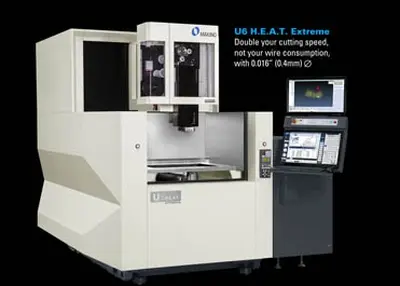 Engineers Must Read: The Art of Wire Cutting and Complementary ProcessingAugust 24, 2023Introduction:In the world of engineers, the collision of creativity and technology is always fascinating. This article will explore an intriguing topic that is a must-read for engineers: the art of wi...view
Engineers Must Read: The Art of Wire Cutting and Complementary ProcessingAugust 24, 2023Introduction:In the world of engineers, the collision of creativity and technology is always fascinating. This article will explore an intriguing topic that is a must-read for engineers: the art of wi...view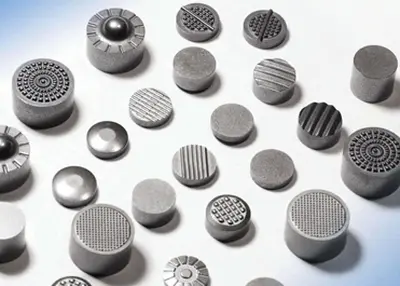 Anodized Aluminum: How Much Do You Know?April 4, 2023Anodized aluminum refers to a layer of dense aluminum oxide plated on the surface of aluminum and aluminum alloy in order to prevent further oxidation, with chemical properties that are the same as th...view
Anodized Aluminum: How Much Do You Know?April 4, 2023Anodized aluminum refers to a layer of dense aluminum oxide plated on the surface of aluminum and aluminum alloy in order to prevent further oxidation, with chemical properties that are the same as th...view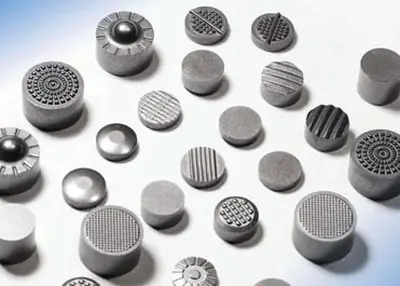 Alloy Steel vs Carbon Steel: Which Is Better?September 5, 2023Steel is a major global industry that involves the combination of iron with other elements, both metallic and non-metallic, to create a versatile material. This combination is done to attain specific ...view
Alloy Steel vs Carbon Steel: Which Is Better?September 5, 2023Steel is a major global industry that involves the combination of iron with other elements, both metallic and non-metallic, to create a versatile material. This combination is done to attain specific ...view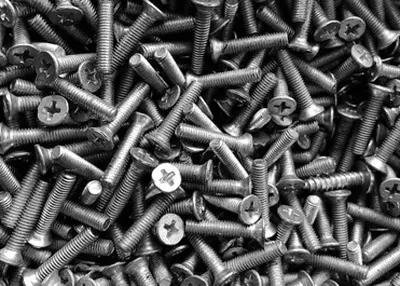 Galvanneal vs Galvanized: Which Sheet Metal Material Is Right for Your Manufacturing Needs?March 22, 2024Galvannealed and galvanized steel are distinct types of sheet metal, produced through different processes and possessing unique properties. Read on to find out more!view
Galvanneal vs Galvanized: Which Sheet Metal Material Is Right for Your Manufacturing Needs?March 22, 2024Galvannealed and galvanized steel are distinct types of sheet metal, produced through different processes and possessing unique properties. Read on to find out more!view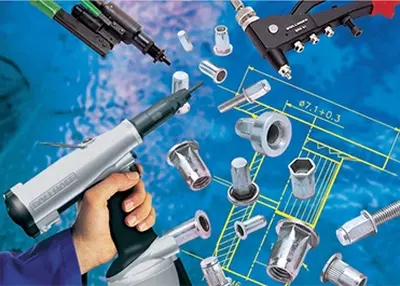 Rivets: 25 Types Of Introduction And User GuideSeptember 26, 2023Rivets are parts that join multiple components and structures together to form a complete body. These parts can be manipulated with some specialized tools. One of the panaceas of manufacturing is rivets. Depending on their design requirements and performance, different types of rivets can be used.view
Rivets: 25 Types Of Introduction And User GuideSeptember 26, 2023Rivets are parts that join multiple components and structures together to form a complete body. These parts can be manipulated with some specialized tools. One of the panaceas of manufacturing is rivets. Depending on their design requirements and performance, different types of rivets can be used.view